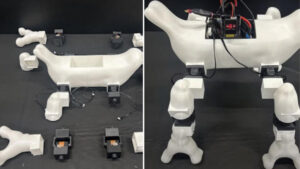US engineers’ AI system converts simple text into real, walking 3D robots in a day
The traditional model of robotic design has long demanded extensive knowledge in engineering, AI systems, and hardware integration.
Often protracted and resource-intensive, the process historically excluded all but the most technically adept.
However, a research team at Duke University is disrupting this paradigm with Text2Robot, a generative AI framework that converts natural language commands directly into functional, physically manufactured robotic systems.
Robots from text using AI
Text2Robot represents a shift in human-machine interaction comparable in scope to the arrival of the graphical user interface in computing.
Where once only those fluent in code could manipulate computer systems, today, the same democratization is being extended to robotics.
The platform enables non-experts to specify a robot’s operational and structural parameters using simple descriptive input. AI models handle every design, simulation, and optimization layer from there.
This technology will be formally presented at the IEEE International Conference on Robotics and Automation (ICRA) in May 2025 in Atlanta, Georgia.
It also earned first place in the innovation category of the 2024 Virtual Creatures Competition held during the Artificial Life conference in Copenhagen, signaling early recognition from the global research community.
According to Boyuan Chen, assistant professor across multiple departments at Duke, including Mechanical Engineering, Electrical and Computer Engineering, and Computer Science, Text2Robot is a response to a critical bottleneck in the field.
“Building a robot from scratch remains inaccessible to most due to the sheer complexity of integrating AI, mechanical design, and functional constraints. Text2Robot moves toward eliminating these barriers,” Chen said.






